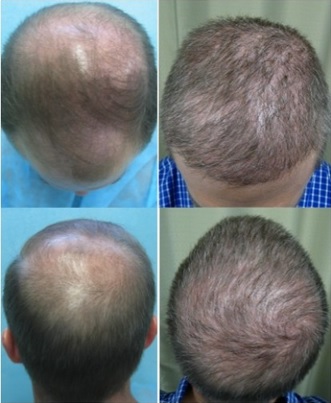A doctor may decide to perform a procedure by dividing it into two or more separate sessions. This would depend mostly on what they are comfortable with doing. In cases of extremely large BHT megasessions (e.g. 15,000 and 25,000 grafts) which would require many hours to complete, it is usually necessary to perform the overall surgery across two sessions.

More sessions are likely with:
- Greater sized recipient area
- Large donor quantities
- High density requirements. Density is defined as the number of follicular units per square centimeter. It is not always necessary to create the appearance of full coverage. Patients with thicker or curlier hair would need fewer grafts. Higher densities are commonly needed for patients with drastic contrast between their hair color and skin tone (e.g. dark hair and fair skin)
Some doctors prefer dividing hair restoration procedures into many smaller sessions (e.g. more than two) But there is really no major advantage to doing this, as it is not necessarily safer or more efficient.
Long Term Maintenance of Restored Hair may call for future hair restoration surgery sessions
Whether or not a single or multiple hair restoration surgery sessions would be needed for the rest of a patient’s lifetime is not guaranteed. It is quite common for patients to require additional touch up procedures.
This is because a person’s natural hair will continue to shed following their surgery which can create noticeable areas of thinning or baldness.
A physician may recommend a regimen of Rogaine and or Propecia after a hair restoration procedure. Additional prescriptions like Nizoral (ketoconazole shampoo) and topical tretinoin are sometimes added to help supplement the effectiveness of the FDA approved medication. In some cases, this approach can be used to help maintain the results of a hair transplant. But for others, a surgical approach may be more ideal
Repairing Hair Restoration Results
The worst case scenario is the need to repair the results of a poorly executed surgery. Of course, this is not evident until about ten to twelve months following the procedure.
Whereas maintenance is needed when the insertions have grown and the natural hair deteriorates, hair repair is necessary when there are flaws with the recipient grafts. This includes:
(1) Failure of the follicles to grow
(2) Temporary growth of the grafts
(3) Poor insertions of the follicles which undermine the aesthetics of the outcome
The trauma of being transferred may have resulted in shock loss.
Also air drying, warmer storage conditions and mechanical injury from surgical instruments can also be factors which damage the follicles and undermine hair growth yield.
Use of Body Hair Follicles As Additional Grafts
Whether or not more surgeries can be performed will also depend on the availability of donor hair grafts. In situations where there are not enough follicles on a person’s head for maintenance or repair procedures, the use of body hair grafts may be considered as additional resources to achieve desired forms of coverage.
Annals of plastic surgery on BHT for inadequate donor supply patients
